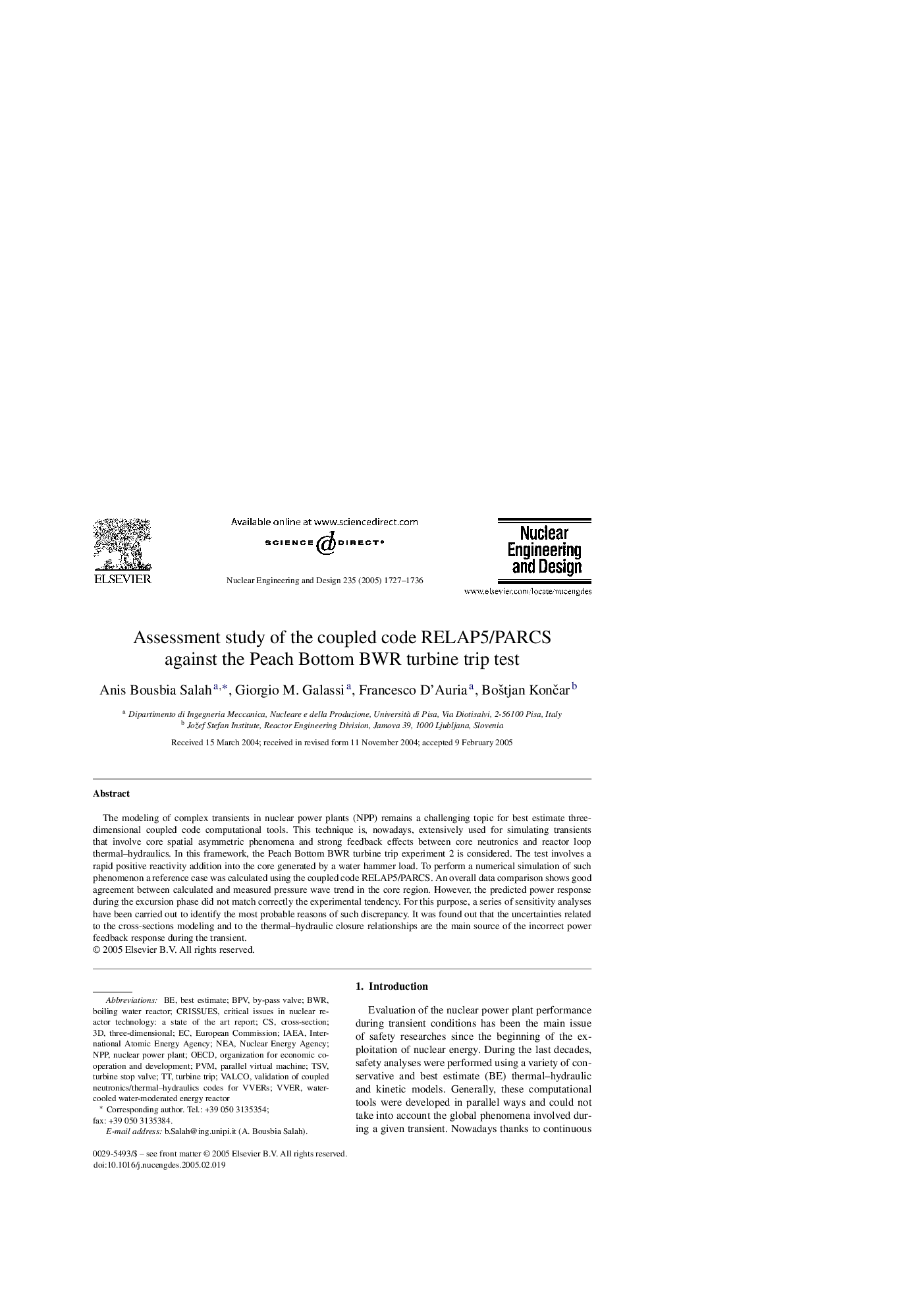| Article ID | Journal | Published Year | Pages | File Type |
|---|---|---|---|---|
| 10293425 | Nuclear Engineering and Design | 2005 | 10 Pages |
Abstract
The modeling of complex transients in nuclear power plants (NPP) remains a challenging topic for best estimate three-dimensional coupled code computational tools. This technique is, nowadays, extensively used for simulating transients that involve core spatial asymmetric phenomena and strong feedback effects between core neutronics and reactor loop thermal-hydraulics. In this framework, the Peach Bottom BWR turbine trip experiment 2 is considered. The test involves a rapid positive reactivity addition into the core generated by a water hammer load. To perform a numerical simulation of such phenomenon a reference case was calculated using the coupled code RELAP5/PARCS. An overall data comparison shows good agreement between calculated and measured pressure wave trend in the core region. However, the predicted power response during the excursion phase did not match correctly the experimental tendency. For this purpose, a series of sensitivity analyses have been carried out to identify the most probable reasons of such discrepancy. It was found out that the uncertainties related to the cross-sections modeling and to the thermal-hydraulic closure relationships are the main source of the incorrect power feedback response during the transient.
Keywords
Related Topics
Physical Sciences and Engineering
Energy
Energy Engineering and Power Technology
Authors
Anis Bousbia Salah, Giorgio M. Galassi, Francesco D'Auria, BoÅ¡tjan KonÄar,
